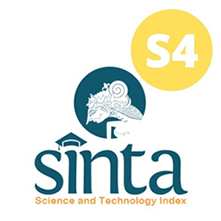Analysis Infinite Impulse Response (Iir) Filter for Reducing Motion Artifacts in Heart Rate Signals Based on Photoplethysmography
Abstract
The increasing prevalence of motion artifacts (MA) in photoplethysmography (PPG) signals poses significant challenges for accurate heart rate monitoring, particularly in dynamic environments. This study addresses the problem of MA interference in PPG signals, which can lead to erroneous heart rate readings and compromised patient monitoring. To mitigate this issue, we employed an Infinite Impulse Response (IIR) filter to enhance the quality of PPG signals by effectively reducing the impact of motion artifacts. The methodology involved collecting PPG signals from a sample of participants during various physical activities. The raw signals were subjected to both filtering and non-filtering processes using MATLAB, allowing for a comparative analysis of the signal quality. The filtering process was designed to suppress unwanted frequencies associated with motion while preserving the physiological signals of interest. The performance of the IIR filter was evaluated based on the Signal-to-Noise Ratio (SNR) and the accuracy of heart rate extraction. Results indicated a significant improvement in signal quality post-filtering, with the SNR increasing from an average of 5.2 dB to 15.8 dB, demonstrating a substantial enhancement in the clarity of the PPG signals. Furthermore, the heart rate extraction accuracy improved from 78% to 95% after applying the IIR filter, showcasing the effectiveness of the proposed method in real-time applications. In conclusion, the application of the IIR filter in processing PPG signals effectively reduces motion artifacts, leading to more accurate heart rate monitoring. This research highlights the potential for improved patient outcomes in clinical settings and suggests further exploration of advanced filtering techniques to enhance the reliability of wearable health monitoring devices. The findings underscore the importance of addressing motion artifacts in the development of robust biomedical sensing technologies

This work is licensed under a Creative Commons Attribution-ShareAlike 4.0 International License.
Authors who publish with this journal agree to the following terms:
- Authors retain copyright and grant the journal right of first publication with the work simultaneously licensed under a Creative Commons Attribution License that allows others to share the work with an acknowledgement of the work's authorship and initial publication in this journal.
- Authors are able to enter into separate, additional contractual arrangements for the non-exclusive distribution of the journal's published version of the work (e.g., post it to an institutional repository or publish it in a book), with an acknowledgement of its initial publication in this journal.
- Authors are permitted and encouraged to post their work online (e.g., in institutional repositories or on their website) prior to and during the submission process, as it can lead to productive exchanges, as well as earlier and greater citation of published work (See The Effect of Open Access).











